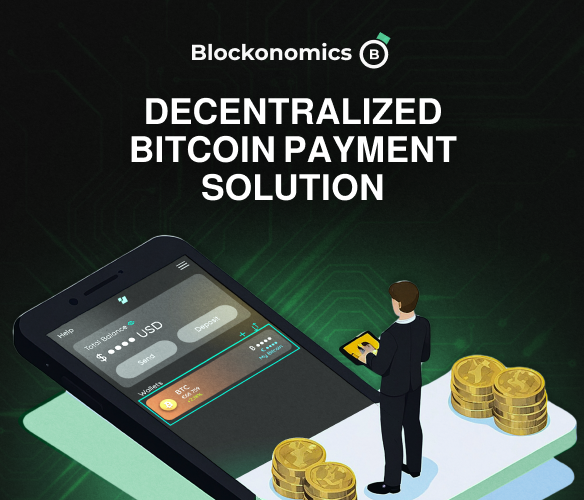Solaxy: Scaling Solana with Layer 2 Technology

Solaxy uses L2 technology to boost Solana’s capabilities, one of the fastest blockchains in the industry. This article breaks down Solaxy’s technical features, its advantages, and its competitors.
On this page
Solana is known for its high performance and low transaction fees, but it still runs into congestion during peak periods.
These challenges fall under what's commonly known as scalability issues. And Solaxy, a newly launched project, steps in to address them.
A Closer Look at Solana’s Challenges
Solana stands out as one of the fastest blockchains available today, handling up to 65,000 transactions per second thanks to its Proof-of-History (PoH) consensus algorithm. This innovative method assigns each transaction a timestamp that confirms exactly when it was recorded on the blockchain.
As a result, Solana creates new blocks using a chronological record of transaction order and event tracking.
But in practice, the network runs into trouble during periods of heavy traffic (such as surges in NFT activity or major events in the DeFi industry). At those times, Solana may slow down or even go offline.
Solaxy and Its Role in the Solana Ecosystem
Technically, Solaxy builds on a concept already familiar from Ethereum’s L2 solutions. By shifting most computations to a parallel layer, Layer 2 technology improves the performance of the mainnet while still relying on the main blockchain for security.
This layered structure makes the blockchain:
- more efficient,
- less vulnerable to congestion,
- better suited for dApps.
This is the strategy Solaxy uses to boost Solana’s performance. By “outsourcing” the heavy workload of transaction processing to Layer 2, the mainnet (Layer 1) receives completed results and simply verifies and records them on the blockchain. It’s similar to a business owner hiring an accountant—freeing up time to focus on growing the business.
In addition to its core goals, the Solaxy protocol also aims to improve Solana’s compatibility with other blockchains, including Ethereum. This step should make it easier to access new tools and liquidity across different networks.
How Solaxy L2 Works
Solaxy groups transactions into batches (data sets) and sends them to Layer 1 for final confirmation. This setup lightens the load on the main network since it no longer needs to process each transaction individually.
This method, called a rollup, already works on Ethereum through L2 solutions like Arbitrum and Optimism. According to developers at the Ethereum Foundation, zk-rollups can increase network throughput many times over while keeping security intact.
For Solana, this approach is just as important, since heavy network traffic has repeatedly caused outages in the past.
Related: Anatoly Yakovenko: The Visionary Behind Solana’s Rise
Opportunities for Apps and Compatibility
Solaxy also supports the development of decentralized applications (dApps) by offering modular settings that let developers customize apps to fit their specific needs. This flexibility benefits a wide range of sectors, including NFT marketplaces, DeFi platforms, and blockchain games that require high performance.
For instance, the game Star Atlas on Solana has struggled with delays caused by network congestion. The team behind Solaxy believes their solution can help projects like this run more consistently.
Another key feature is the bridge to Ethereum. This bridge lets users move assets between Solana and Ethereum, giving them access to new liquidity sources. According to DeFi Llama, more than 60% of all DeFi liquidity sits on Ethereum. Tapping into that pool could help bring more users into the Solana ecosystem. Solaxy also plans to connect with other blockchains to make the ecosystem more versatile.
For users, Solaxy brings lower fees and fast transactions, even during high-traffic periods. For developers, it offers a way to build complex applications without the risk of overloading the network.
For example:
- DeFi platforms like Serum can process more trades while reducing the risk of price slippage.
- NFT marketplaces such as Magic Eden can confirm purchases faster, reducing counterparty risk for users.
These improvements could strengthen Solana’s position as a leading competitor to Ethereum, especially in areas where speed plays a critical role.
Learn more about the rivalry between these projects in our article “Ethereum vs Solana: Choosing the Optimal Blockchain.”
Solaxy Tokens
Like many blockchain projects, Solaxy has its own native token, SOLX, which runs on the Solana network. The staking system for SOLX stands out as one of the project’s main features.
According to current figures, staking SOLX can yield up to 138% annually, though the rate may fluctuate depending on market conditions and system performance. However, this high return puts the product in the high-risk category.
As of now, users have staked more than 8.1 billion tokens, according to the project’s official website. The development team sees this as a clear sign of growing community interest.

Solaxy’s Opportunities and Challenges
Solaxy faces several potential challenges.
- Rolling out an L2 solution depends on support from the Solana community. Developers and users need to adopt new standards, and that process can take time.
- L2 security is another key issue.
While Solaxy uses the main network for final verification, shifting transaction processing to a new layer introduces potential vulnerabilities. The project needs to prove its technical reliability and strong protection measures.
Who Competes with Solaxy?
Solaxy has several competitors in the Solana L2 space, and one of the main ones is Manta Network. While both projects focus on scaling the main network, they take different approaches and prioritize different features, creating a compelling rivalry.
Manta Network relies on zero-knowledge (ZK) technology, which enables transactions with a high level of privacy. As a result, this setup keeps the data hidden while still allowing the blockchain to verify its authenticity, without needing to trust a third party.
This approach makes Manta Network a strong choice for dApps that focus on privacy. The Manta team also puts effort into developing ready-made applications, like wallets for anonymous transactions, which sets it apart from Solaxy.

Solaxy, on the other hand, focuses more on building infrastructure solutions. Its goal is to create a flexible Layer 2 that improves Solana’s scalability for all kinds of applications, including DeFi, NFTs, and gaming.
Unlike Manta, Solaxy puts a strong emphasis on modularity and compatibility by launching a bridge to Ethereum. As a result, it gives developers the tools to customize their projects to meet a broader range of user needs.
Both projects tackle the scalability challenge, but their approaches complement each other. Moreover, their competition for new audiences could help push Solana’s ecosystem forward and increase its overall adoption.
Since Ethereum is Solana’s main competitor, Solaxy’s potential can be measured against other well-known L2 solutions like Polygon or Arbitrum.
According to the Solana Foundation, the network processed over 50 billion transactions in 2024, which shows how quickly the demand for scalability is growing. Projects like Solaxy aim to handle that growth effectively while making the main network more stable.
Will Solaxy become a key part of the Solana ecosystem?
That depends on how well the project delivers on its technical promises, and whether the SOLX token turns out to be a solid asset rather than a scam.
To learn more about the mind behind Solana’s breakthrough algorithm, read our article: Anatoly Yakovenko: The Visionary Behind Solana’s Rise.
The content on The Coinomist is for informational purposes only and should not be interpreted as financial advice. While we strive to provide accurate and up-to-date information, we do not guarantee the accuracy, completeness, or reliability of any content. Neither we accept liability for any errors or omissions in the information provided or for any financial losses incurred as a result of relying on this information. Actions based on this content are at your own risk. Always do your own research and consult a professional. See our Terms, Privacy Policy, and Disclaimers for more details.
























